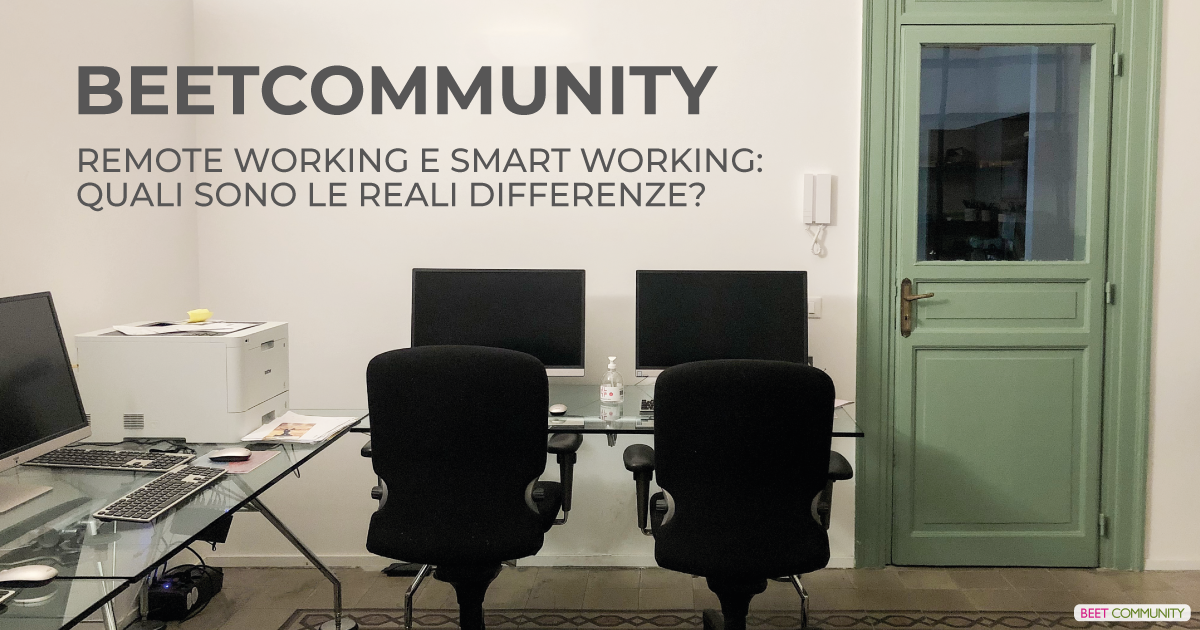Let’s clarify the real differences between remote working and smart working | Two similar yet distinct concepts—what are the differences?

Remote working and smart working are two similar concepts often used as synonyms, but in reality there are differences. In this article we’ll try to clarify
By now we know it well—we’ve written a lot about it over the past year—
smart working has become a widespread and well-appreciated practice among workers and companies. A phenomenon that certainly got a big push from the Covid-19 wave that forced everyone to reorganize their work and, consequently, their lives.
However, there’s still an aspect that’s worth exploring further: the
differences between remote working and smart working.
Yes, the two concepts aren’t the same, even if they’re similar.
Remote working, as the term itself suggests, is the ability to
work remotely by using certain IT and technological tools, like personal computers, to carry out work activities from home by accessing company servers remotely.
Smart working also involves working outside the office and using specific digital technologies to make it happen. “So they’re the same thing,” you might say! Well, that’s exactly where the difference lies, because the difference between these two modes isn’t about the type, amount, or quality of the technology used:
the difference is in the type of employment relationship between a company and its workers.
In Italy,
smart working has been regulated and clearly defined by the Ministry of Labor as “a
way of performing a subordinate employment relationship characterized by the absence of fixed hours or workplace and organized by phases, cycles, and objectives, agreed upon by employee and employer; a method that helps the worker balance life and work and at the same time promotes increased productivity.”
Reading what’s reported in the Official Gazette,
smart working in Italy is seen as a type of subordinate work, so the
smart worker is an employee in every sense.
For
remote working, however, this assumption doesn’t apply, because the
remote worker can be either an employee or a freelancer (and is in most cases).
The real
evolution of smart working lies in how subordinate work is conceived: it’s no longer measured by hours and presence in the office, but by the productivity of the individual, who must work towards goals and is free to organize their activities independently.
The
smart worker therefore has no set hours and can work from anywhere—as long as they get the job done, meet deadlines, and stick to the work phases assigned to them.
That’s why when we talk about
smart working we often associate it with the word
flexibility, because it’s clear how this mode allows workers to easily balance work commitments and personal life without having to sacrifice time for either.
But
smart working goes beyond the simple (and much-desired)
work-life balance. In fact, adopting this work mode requires a total
review of organizational models and leadership paradigms; traditional work models can’t function in a system where workers are autonomous and responsible. Concepts like sharing, collaboration, trust, and flexibility must be prioritized.
This isn’t an immediate change and requires some adjustment: every worker will need to find the best way to reorganize their routine to achieve productivity. Likewise,
managers will need to rethink certain approaches and adapt to the new model to be good leaders.
But once the new system is up and running, the results in terms of efficiency, performance, and personal and professional satisfaction will be unmatched.
